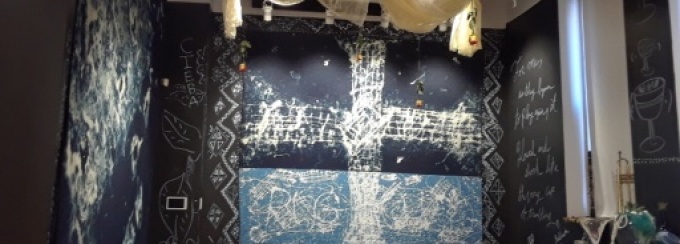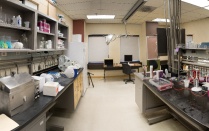IN THE NEWS
Zeelie Brown

The World’s Most Beautiful Septic Tank
I’m going to ask a very stupid question that could save the lives many black elders in rural Alabama living with the threat of sewage-born illnesses of poverty: why can’t septic tanks be beautiful?
I’ve been researching permacultue – slowly plodding through Bill Mollison’s dense, pithy thoughts – and thinking about how in my native rural Alabama open sewers abound in the most sparsely populated parts of the state. Those living near them risk water and mosquito-borne illnesses that aren’t often seen in a rich country like the US, but the US is only rich in the places it deems worthy.
I want to use my installation practice to create a simple “color by numbers” permaculture septic garden blueprint that will filter human waste, recycle it, and turn it into a lush, beautiful smelling garden. Thisseptic garden should ideally cost no more than $350 for materials, and be simple enough that a team of 4 fieldhands be able to install it in an afternoon. It should be made of materials commonly found in Alabama’s black belt, and be made to accommodate it’s porous soils. Up top will be planted citronella, lemongrass, basil, catmint, lavender, wildflowers, scented geraniums, marigolds, rosemary and other mosquito repellant plants.
This project is vital in a world that doesn’t enough contemplate waste, death, and resurrection. So much of American myth-culture is based on the idea of eternal youth, and it’s brought us to the precipice of human extinction. If we do not learn to successfully manage our waste, we will all die.
Zeelie Brown
My medium is the experience of bodies in space. My medium is refuge, maternity, community building, and African spiritual healing. My medium is the herbs that grow by the side of the road. My medium is the little things one can do to nurture life.
I could use this space to talk about how I was at The Shed, or MoMA, or was shortlisted for a Fulbright or taught at Harvard once but I’d really rather use the space to talk about my past work and where I’m thinking of going from here.
I’m thinking a lot about the women’s work my grandmother taught me in southern Alabama. It was textiles work. We were enslaved to pick cotton and took that to craft beauty, or rather to continue something of the life we knew before the lash. I’ve been thinking about what it means to be black, and queer, and a future mother figure, and to have relationship to the earth. I’ve been thinking about the aesthetics of women’s work, and how I might want to bring that aesthetic to the farm plan that I want to make for a little 10 acres in Alabama.

